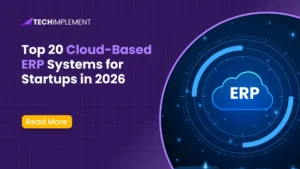
Effortless Setup: Data Integrator for Field Service & FinOps
November 11, 2025 . 9 min readMany organizations use separate systems for field operations and finance, which can cause delays, data duplication, and limited visibility. Microsoft Dynamics 365 solves these issues by connecting all business areas on a single platform. Integrating Field Service with Finance & Operations (FinOps) using the Data Integrator allows companies to share data smoothly, keeping information accurate and consistent across systems.
This integration helps finance teams, field service managers, and operations staff:
- Keep data consistent across departments
- Improve billing accuracy by syncing work orders
- Reflect real-time service costs in financial reports
- Save time and reduce manual work
In this blog, you’ll learn how to integrate Field Service with FinOps using the Dynamics 365 integration tool to achieve seamless, accurate data synchronization.
What Is the Data Integrator in Dynamics 365?
The Data Integrator is a Microsoft Power Platform service that allows smooth data transfer between Dynamics 365 applications and the Dataverse. This integration tool ensures that systems within the Dynamics ecosystem remain synchronized and accurate.
It operates through batch-based synchronization, meaning data is updated at scheduled intervals rather than in real time. This approach keeps systems aligned while handling large data sets efficiently.
Role of the Data Integrator in Bridging These Two Apps
The Data Integrator acts as a bridge between Field Service (Dataverse) and Finance & Operations, ensuring smooth and accurate data flow.
This integration framework allows departments to share and manage customer, product, and work order details with full control.
When a work order is updated in Field Service, the changes are automatically reflected in Finance & Operations for billing, inventory management, or other operational needs, creating a unified and department-specific workflow.
Connecting Field Service with Finance & Operations
Integrating Field Service with Finance & Operations (FinOps) links front-line service tasks with financial processes.
Common use cases
- Maintaining financial consistency by ensuring service-related data and costs remain accurate across both systems.
- Coordinating work orders with the appropriate departments for billing, inventory, or operational tracking.
- Synchronizing updates to accounts, products, and service history for unified reporting and decision-making.
- Supporting better planning and resource allocation by providing a clear view of service and financial data.
Prerequisites Before You Start
Before you can connect Dynamics 365 Field Service with Finance & Operations (FinOps), a few prerequisites should be in place to ensure an uncomplicated configuration.
- Licensing: Licenses must be active and valid for both Field Service and FinOps in order to utilize the integration.
- Dataverse Setup: Dataverse needs to be properly configured and accessible, as this is the primary conduit for the two systems.
- User Permissions: Both environments and the Power Platform Admin Center require admin access to configure and manage the integration.
Check for Existing Integrations Before Creating a New One
Prior to creating a new integration, verify that there are no existing integrations, so there is no data conflict.
Solutions
You should install the Field Service to Finance & Operations Integration Template which will provide a defined mapping of existing data and provide options to speed up configuration.
Connectivity
Both must be in the same Azure Active Directory (AD) tenant for secure and seamless data.
Official Microsoft Reference
For detailed guidance on integrating Field Service with Finance & Operations using Dynamics 365, check out the official Microsoft documentation:
Step-by-Step Setup of Data Integrator Between Field Service and Finance & Operations
The Data Integrator links Dynamics 365 Field Service and Finance & Operations (FinOps), allowing both systems to share information automatically. Follow these steps to configure and verify a smooth integration process.
Phase 1: Core Integration Steps
Creating a Data Integration Project
- Sign in to the Power Platform Admin Center.
- Navigate Data Integration → New Project.
- Choose the template “Field Service to Finance & Operations Integration.”
- Name the project (e.g., FS–F&O Data Sync).
- Select your data connections:
- Source: Dataverse (Field Service)
- Destination: Finance & Operations
- Save and open the project to begin configuration.
Configuring Data Mappings
- Review the predefined entity mappings included in the template:
- Accounts ↔ Customers
- Contacts ↔ Customers
- Products ↔ Released Products
- Work Orders ↔ Sales Orders or Projects
- Adjust field mappings where necessary to match business requirements.
- Add lookup transformations for currencies, units, or other related data.
- Save the mapping configuration to apply changes.
Running the Integration
- Start the integration manually or schedule it to run at regular intervals.
- Track its progress in the Execution History section.
- Review any failed records or error messages to resolve issues.
- Confirm that data appears correctly in both Field Service and FinOps environments.
Validating the Integration
- Create a sample Work Order in Field Service and verify that it appears as a Sales Order or Project in FinOps.
- Update an Account record in Field Service and ensure the changes reflect in FinOps.
- Review synchronization logs to confirm successful data transfer.
- Resolve any mismatches, such as missing lookups or incorrect mappings.
| Problem | Possible Reason | How to Fix |
|---|---|---|
| Authentication error | Expired token or broken connection | Reconnect or refresh credentials |
| Missing or mismatched data | Field not mapped correctly | Review and adjust data mappings |
| Batch sync failure | Large data load | Split into smaller batches |
| Integration not running | Scheduling issue | Restart or reschedule the project |
Phase 2: Supportive and Post-Integration
Once the initial setup is complete, ongoing monitoring and fine-tuning are key to maintaining a smooth connection between Dynamics 365 Field Service and Finance & Operations (FinOps). This phase focuses on resolving common issues, understanding system limitations, and exploring ways to enhance integration performance.
Common Issues and Troubleshooting
Even with a proper setup, some issues may occur during data synchronization. Below are common challenges and their quick fixes:
- Authentication Errors: Recheck your data connections or renew expired authentication tokens in the Power Platform Admin Center.
- Mapping Mismatches: Make sure entities and relationships exist in both applications, and that field names are correctly mapped.
- Missing Data: Verify that all required fields are included in the integration template and that none are left unmapped.
- Batch Failures: For large data loads, divide them into smaller batches to improve sync performance and avoid timeouts.
Benefits of Data Integrator Setup
Configuring this integration tool helps organizations build a connected and trustworthy data ecosystem:
- Unified customer, product, and service information across Field Service and FinOps
- Improved billing accuracy through consistent work order and sales order synchronization
- Better inventory control and reporting with shared, up-to-date business data
This integration helps teams work on accurate data, saving time and improving decision-making across departments.
Limitations of Data Integrator (and When to Upgrade to Dual Write)
While the Data Integrator provides a solid foundation, it has some limitations:
- Synchronization is batch-based, not real-time.
- Coverage is limited to selected entities compared to Dual write.
- Managing complex mappings for larger data models can be time-consuming.
For businesses that need instant, two-way synchronization, upgrading to Dual write is the recommended next step. It offers real-time data flow between Dataverse and Finance & Operations, creating a fully connected business environment.
Let Our Experts Handle Your Data Integrator Setup
If your organization is exploring integration between Field Service and Finance & Operations, our experts can help design and deploy the right setup. We assess existing systems, identify integration gaps, and ensure smooth, accurate synchronization tailored to your business needs.
Need help setting up your Field Service and FinOps integration? Our certified Dynamics 365 experts can streamline your deployment, ensure data accuracy, and help you unlock full business visibility.
Unlock Seamless SyncConclusion
Successfully connecting Field Service and Finance & Operations transforms fragmented systems into a cohesive workflow, enabling organizations to make smarter decisions based on reliable data. This integration not only strengthens operational and financial alignment but also sets the stage for future scalability and automation, helping businesses stay agile and responsive in a dynamic environment.
FAQs
The Data Integrator uses predefined templates to map and transfer data between Dataverse (Field Service) and Finance & Operations through API-based connections. It performs batch synchronization, ensuring entity-level consistency while maintaining data security via Azure AD authentication.
Before initializing, check to make sure that Dataverse is properly configured; you have an active license for both environments, and you have sufficient admin permissions in the Power Platform Admin Center. Also, make sure both environments are within the same Azure AD tenant to facilitate authentication and connectivity.
Mapping transformations allow you to adjust or translate data as it moves between systems for example, converting currencies, aligning unit measures, or mapping status fields. These transformations can be configured within the integration project to ensure data consistency across both apps.
Check the Execution History in the Data Integrator for error details. Common issues include authentication token expiry, mismatched field names, or missing lookup data. Resolve by refreshing credentials, correcting field mappings, and re-running only the failed records instead of the entire batch.
Use smaller, incremental data batches instead of full data loads. Schedule integrations during low-traffic hours, and enable parallel processing where supported. Also, monitor data throughput in the Power Platform Admin Center to identify potential bottlenecks early.
Yes. You can extend existing templates by adding custom entities or fields as long as they exist in both systems. Each new mapping must define source and target relationships, transformations, and lookup references for accurate data alignment.
The Data Integrator is a batch-based, template-driven tool ideal for periodic synchronization. Dual-write, however, provides real-time, bi-directional data flow by directly linking Dataverse tables with FinOps entities, offering tighter coupling for organizations that require instant updates.
Author Insights
Miley Johnson is a Technical Content Creator at Tech Implement, passionate about making complex technology easy to understand. She specializes in turning technical jargon into clear, engaging content that helps businesses and professionals navigate CRM and ERP solutions with confidence. With a strong attention to detail and a love for storytelling, Miley creates content that not only informs but also connects with the audience. Her goal is to simplify technology and make it more accessible for everyone.
Ready to bring your project to life?
Schedule a Meeting


